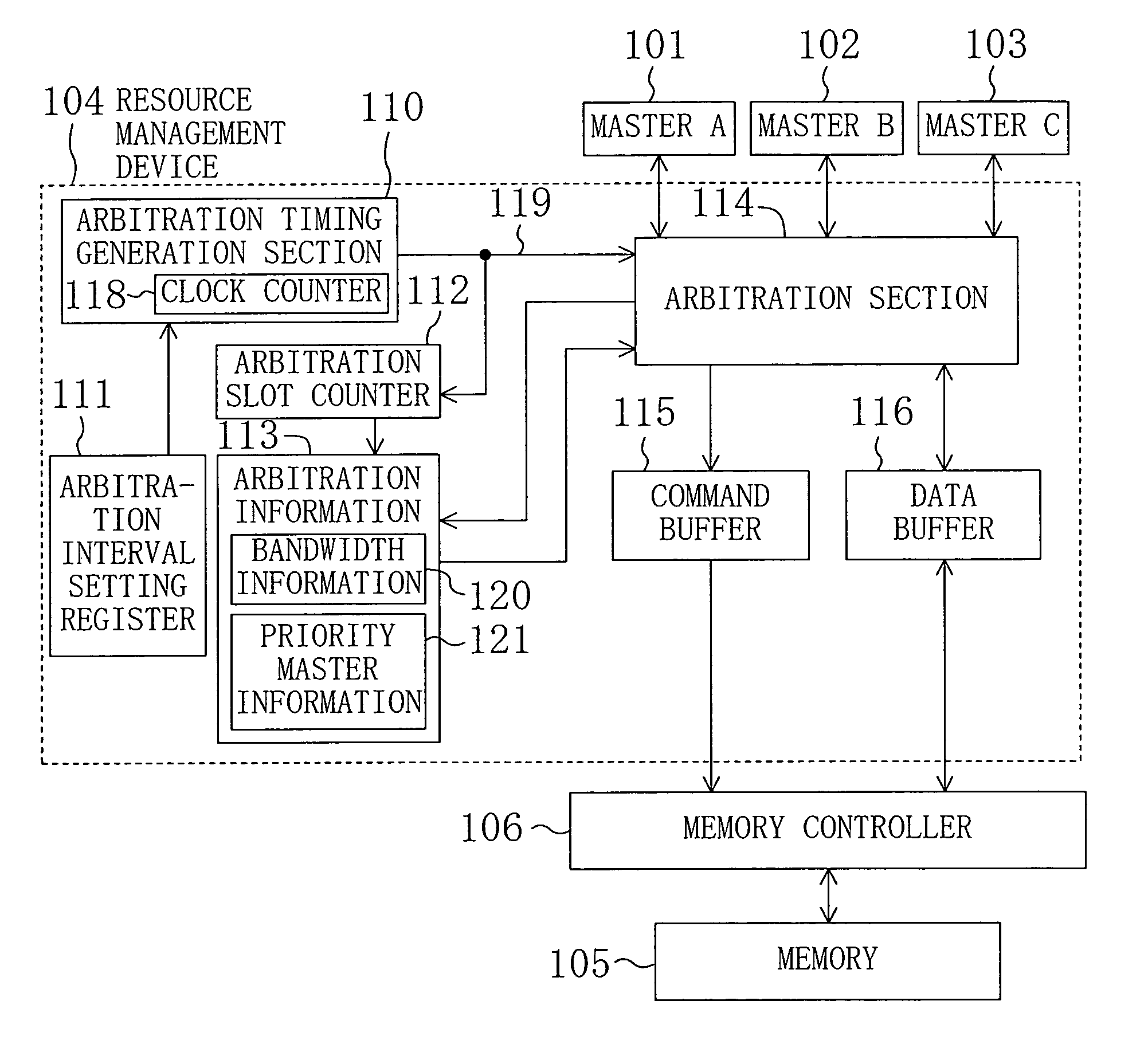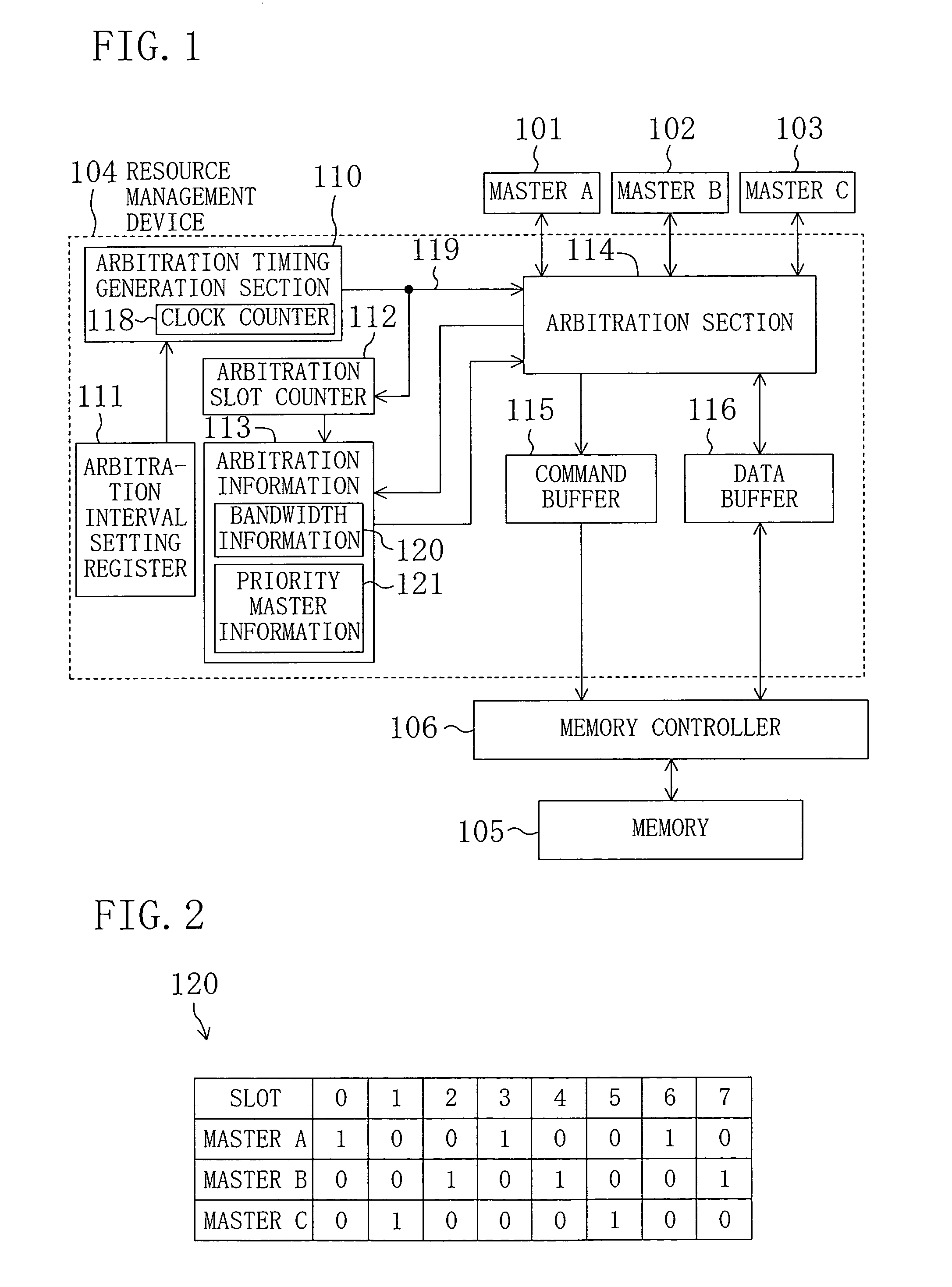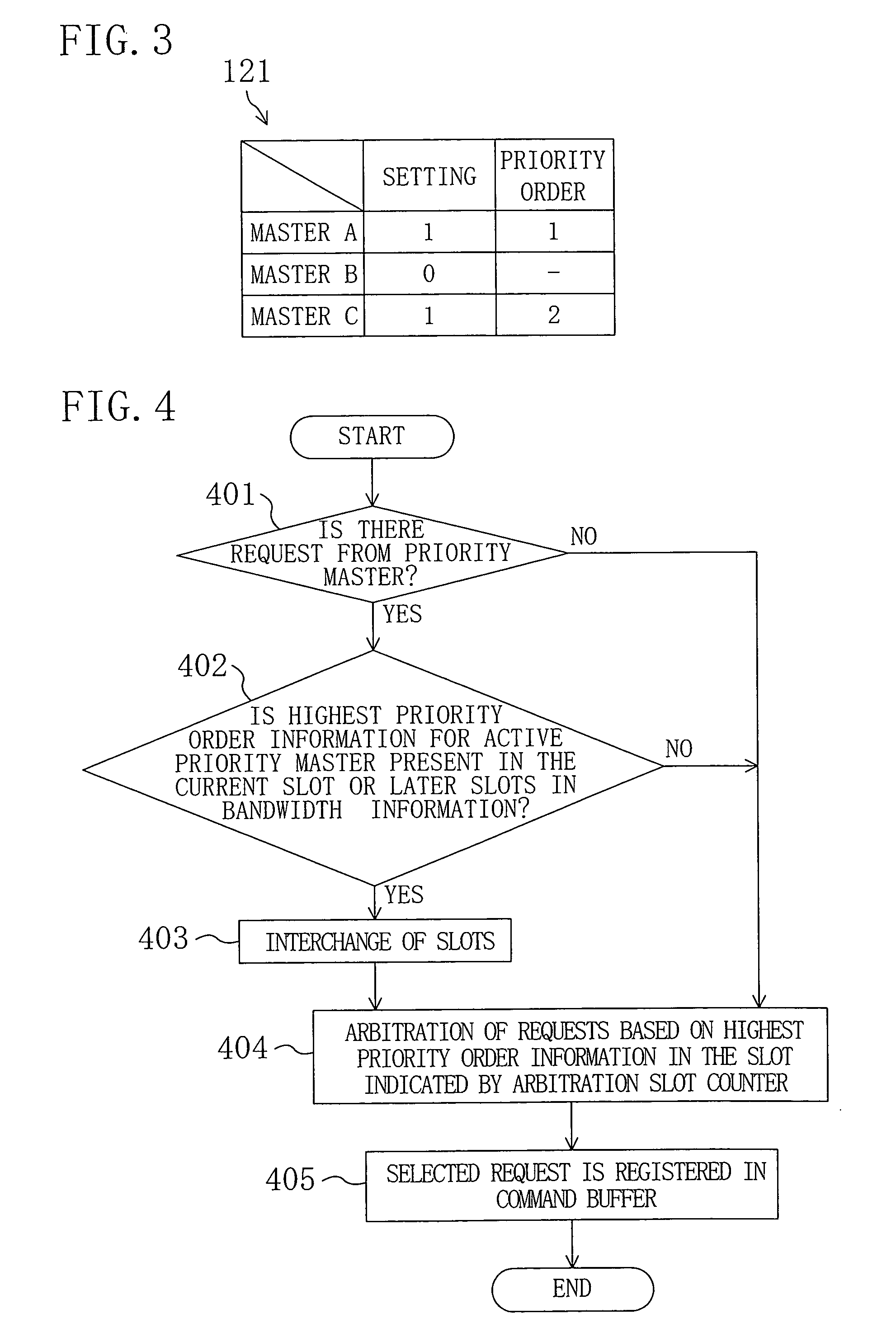Resource management device
a resource management and resource technology, applied in the direction of multi-programming arrangements, instruments, program synchronisation, etc., can solve the problems of inability to ensure access bandwidth for each master, inability to properly allocate the right to use shared resources for each maser, etc., to reduce access latency
- Summary
- Abstract
- Description
- Claims
- Application Information
AI Technical Summary
Benefits of technology
Problems solved by technology
Method used
Image
Examples
first embodiment
[0035]FIG. 1 schematically illustrates the configuration of a data processing system which includes a resource management device 104 according to a first embodiment of the present invention. In FIG. 1, the reference numerals 101, 102 and 103 denote masters, each connected to the resource management device 104 via respective buses. The resource management device 104 arbitrates access requests from the masters 101, 102, and 103 to a memory 105 serving as a shared resource, and then transmits the selected request to a memory controller 106 connected to the memory 105. The memory controller 106 interprets the transmitted access request, generates a signal complying with the memory protocol, and reads or writes data in the memory 105. In the following descriptions, the masters 101, 102, and 103 will also be referred to as “masters A, B, and C”, respectively.
[0036] In the resource management device 104 of FIG. 1, the reference numeral 110 refers to an arbitration timing generation sectio...
second embodiment
[0051]FIG. 6 schematically illustrates the configuration of a data processing system which includes a resource management device 104 according to a second embodiment of the present invention. The difference from FIG. 1 is that arbitration information 113 further includes priority master bandwidth information 122.
[0052]FIG. 7 indicates an example of bandwidth information 120 shown in FIG. 6, while FIG. 8 indicates an example of the priority master bandwidth information 122 of FIG. 6. It is assumed that priority master information 121 is the same as the example of FIG. 3. Slots 6 and 7 in FIG. 7 are used in cases where there are no access requests from priority masters. The priority master bandwidth information 122 of FIG. 8 is bandwidth information used for reducing the latency of access by priority masters to a memory 105, i.e., a shared resource. In the examples shown in FIGS. 7 and 8, a bandwidth is guaranteed for slots 0 to 5 in the bandwidth information 120 and for priority slo...
third embodiment
[0063]FIG. 11 schematically illustrates the configuration of a data processing system which includes a resource management device 104 according to a third embodiment of the present invention. The difference from FIG. 1 is that the resource management device 104 further includes an access counter 123 for limiting the number of accesses to be made by priority masters within a given period of time. Also, an arbitration slot counter 112 of FIG. 11 is designed so as to receive an update inhibit signal 130 from an arbitration section 114.
[0064]FIG. 12 indicates an example of bandwidth information 120 shown in FIG. 11, while FIG. 13 indicates an example of priority master information 121 of FIG. 11. In the bandwidth information 120 of FIG. 12, highest priority order information for a master A is set at “0” in all of the slots. The priority master information 121 of FIG. 13 contains not only settings for priority masters and priority order among the priority masters, but also the initial v...
PUM
 Login to View More
Login to View More Abstract
Description
Claims
Application Information
 Login to View More
Login to View More - R&D
- Intellectual Property
- Life Sciences
- Materials
- Tech Scout
- Unparalleled Data Quality
- Higher Quality Content
- 60% Fewer Hallucinations
Browse by: Latest US Patents, China's latest patents, Technical Efficacy Thesaurus, Application Domain, Technology Topic, Popular Technical Reports.
© 2025 PatSnap. All rights reserved.Legal|Privacy policy|Modern Slavery Act Transparency Statement|Sitemap|About US| Contact US: help@patsnap.com



